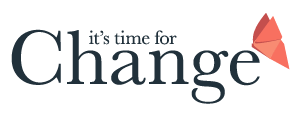Better You; Better Business
Business Creativity and Employee Wellbeing: A Winning Combination
Reading Town Hall was full of energy on 20th October when like-minded individuals came together to explore ways to put creativity and wellbeing at the heart of business.
The Abbey Quarter Business Improvement District (managed by READING UK ) launched the brand-new ‘Better You Better Business’ event, brilliantly organised by Sue Reeves, where delegates were able to learn more about improving employees’ workplace experiences, ideas for wellbeing programmes and the latest information on workplace wellbeing.
Andrew Whiteaker, from Boyes Turner and Chair of Abbey Quarter Business District, kicked off the event talking about the reality for companies in the new world. He and I talk the same language, thinking about The Great Resignation and the importance of employers creating the right work climate for people to want to be part of it.
This was a great introduction to the first of three workshops I facilitated…
Building a work culture to enable creativity, team work and wellbeing
Psychological safety is necessary for people to engage meaningfully. When we develop the right culture for employees to thrive and perform, companies excel. Leaving this key component for success to chance, is high risk.
Every business needs its own strategy and knowledge about how to achieve it day-to-day, with intention. In this session we explored what people understand by the term psychological safety before considering examples of behaviours that drive a toxic culture, those that are good practice, and the impact of them both.
Participants committed to taking positive action using a resource within their teams to identify steps towards achieving the best work culture.
Brains vs KPIs: Are you focusing on the right thing?
Understanding where to focus our resources is a key priority for companies. Yet many continue to focus on outcomes based around targets to meet clients’ needs and increase profit. Creativity and innovation is only achieved when employees feel good about their ability to succeed. Sounds simple but it continues to be overlooked by many companies. When we understand the impact of expectations on brain functioning, we quickly realise we need to reset where, and how, we push performance.
I was joined by Ian Fever to explore the role of recognition on brain functioning, performance and wellbeing. We love this quote, which provided a great conversation starter and prompted a discussion about empowerment and trust.

Raising the level of positivity provides a brain advantage, increasing productivity by as much as 31% compared to a neutral, negative or stressed mode. And positive reinforcement reassures us that we’re on the right track. If that affirmation is absent, demotivation can set in and the imagination goes into overdrive to fill the gaps. That’s an unnecessary addition to mental noise that can reduce our ability to process information by up to 80%!
We discussed the need to consciously seek to understand:
- What motivates our workforce?
- What are their values? Do they align with the company’s?
- What behaviours demonstrate that these values are being lived day-to-day, beyond appearance on a website or office wall?
Participants took thank you cards to use, observing how they feel writing these messages and noting the impact on recipients. We are awaiting feedback!
Are you Managing or Leading Change?
Businesses are experiencing a period of rapid transition towards a new norm. As leaders you may well know where you’re heading. Or possibly not, yet.
How confident are you that your employees know and understand?
Are your they supportive, or are you experiencing resistance?
Do you know how to lead people on the journey, to engage their emotional investment rather than managing the fall out?
These are some of the questions we explored after considering our own responses to change. People identified factors that help or block the experience being positive, and the impact on our behaviour. With the help of a toothbrush (!) I explained the role of neural connections. And the trusted iceberg image made an appearance to introduce questions that we need answered if we’re to stay on board with change.
Amanda Page shared her expertise in the session by explaining the Change Cycle, helping us consider what people might be saying and doing during each phase, and how to move from one stage to the next.
Toothbrushes are currently adorning pencil pots on the desks of those who committed to a step towards leading change with greater empathy and support.

I’m very much looking forward to continuing the conversation with those I met at the event when we touch base in a couple of weeks to find out how they are progressing with their take-aways. If you would like to know more, drop me a line.




